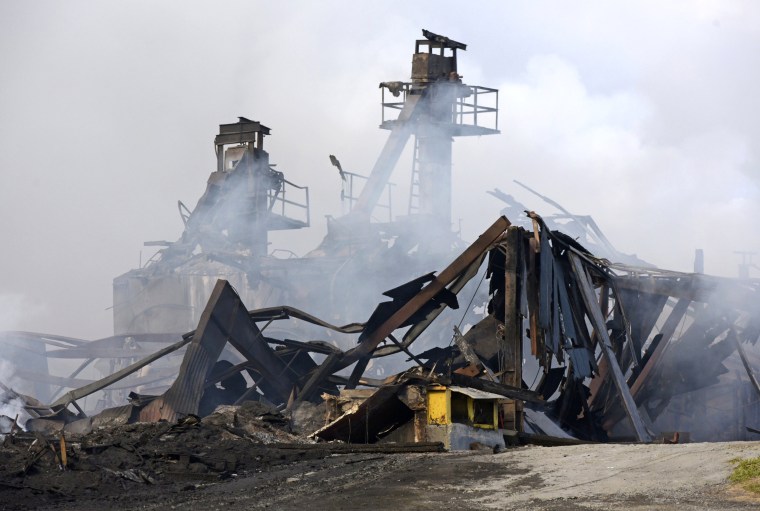Residents of the North Carolina city of Winston-Salem still need to be cautious of a possible explosion, officials said Thursday morning, more than two days after a fire broke out a fertilizer plant there.
"We still do have an active fire," Winston-Salem Battalion Chief Patrick Grubbs told reporters. "Our message has stayed the same the whole time — we're asking all the citizens to stay out of the area and if they're in the area to evacuate. There is still a risk of explosion at this time."
It is still unclear what caused the fire to ignite at the Winston Weaver Co. fertilizer plant ignited on Monday evening.
Officials quickly told residents within a 1-mile radius of the plant to evacuate the area. About 6,500 people live in that area, but it's unclear how many fled their homes.
Firefighters still can't get within 300 feet of the volatile blaze, Grubbs said, and he's not sure when they might be able to get closer. "It could be another day could be another week of waiting we don’t know," he said.
Crews fought the fire for two hours Monday before realizing how dangerous it could be, and retreating. "We have to make these decisions everyday and typically they don’t include leaving the scene," Grubbs said.
On Thursday, rain was helping to calm the flames but also pushing down dangerous smoke, creating a health hazard. Grubbs said the air quality could be dangerous for people with and without respiratory issues.
The rain is also preventing crews from flying drones over the area to assess the scene.
Still 12 investigators from multiple agencies are doing what they can to get the probe into the fire going, Fire Investigator Rick McIntyre said.
He said the plant adhered to codes from 1939 because North Carolina law only stipulates that buildings are up to code for the year they are built. The building was inspected yearly.

